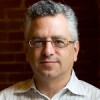The city of Phoenix is engaged in an ambitious plan to increase its urban forest and supply more shade for its residents. The hope is to provide cover for 25 percent of the city over the next 15 years. Some of that will come from transit overhangs and other artificial cover, but a lot of it will come from planting new trees. “It’s a movement to put more conscious effort into managing our tree canopy,” says Richard Adkins, the city’s forestry supervisor. “It has to be part of our development process.”
A century ago, Phoenix had a lot more vegetation than it does today. As the city grew, people looked to air conditioning rather than shade trees as a way to beat the sometimes oppressive heat. In fact, trees were something of an enemy. Because of the risk of flash floods following violent desert storms, engineers did everything they could to direct water out of the area as quickly as possible. Trees retain water, so having lots of them wasn’t seen as a good thing.
That’s changing. Many cities today have ambitious tree-planting programs in place, hoping to help stave off climate change. In Phoenix, the concern is more immediate. It’s already ungodly hot, so trees and other sources of shade are desired mainly to make the city and its growing downtown area more walkable.
But the tree-planting program, while applauded by most residents, has triggered skepticism from some locals who wonder whether it’s a good way to spend money. They argue that the trees could die given the local climate.
Phoenix isn’t like the Northeast or the Pacific Northwest. You can’t just put any old tree in the desert ground and expect it to grow. Native plants are preferable, but Adkins and his team are looking far afield for species sufficiently hardy to withstand the climate. A Chinese plant called pistache holds great promise. It’s drought-tolerant, offers thick shade and requires relatively little maintenance.
As a bonus, pistache trees will add some fall color to the city’s fairly monochromatic palette. “It looks like it’s going to be a good player for us,” Adkins says.









